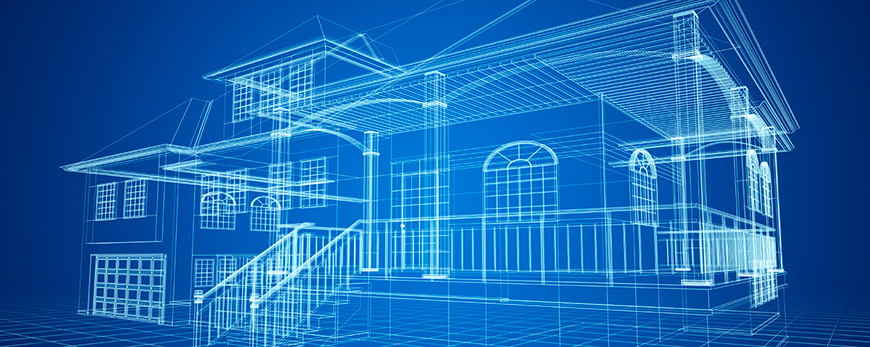Discover Prize-winning Tasks by Renowned CDA Architects
Discover Prize-winning Tasks by Renowned CDA Architects
Blog Article
Recognizing the Collaborative Refine In Between Designers and Engineers in Modern Construction Projects
The collective procedure in between architects and designers is essential in contemporary construction jobs, as it integrates design intent with design feasibility. Checking out these characteristics reveals insights that might dramatically impact project results and general market standards.
The Importance of Partnership
The joint synergy in between designers and engineers is essential for the successful understanding of any type of building and construction job. This partnership unites distinct know-how and viewpoints, making it possible for the assimilation of ingenious layout with practical engineering options. By interacting, architects and designers can make certain that a job not just satisfies visual and functional needs yet additionally sticks to safety and security, sustainability, and financial restraints.
Cooperation fosters a common vision, facilitating the alignment of objectives and assumptions from the beginning. This positioning is vital in attending to prospective challenges and mitigating risks that could occur during the task lifecycle. A joint technique allows for the reliable allowance of resources, maximizing both time and expense.
The importance of cooperation encompasses the repetitive procedure of style and building, where responses from engineers can educate architectural choices, causing more practical and sustainable styles. On the other hand, designers can motivate engineers to believe creatively regarding how to accomplish architectural integrity without endangering creative intent. Inevitably, the joint connection between designers and designers is not merely valuable; it is fundamental to the development of top quality, functional, and cutting-edge built atmospheres that satisfy the demands of society.
Communication Methods and Devices
Effective communication methods and devices are vital for promoting cooperation in between engineers and engineers throughout the project lifecycle. Establishing clear networks of interaction is essential to guarantee that all employee are lined up with job purposes, timelines, and responsibilities. Regular meetings, both in-person and online, supply possibilities for stakeholders to review progress, address problems, and make informed decisions.

Additionally, taking on collaborative interaction tools, such as Slack or Microsoft Teams, permits immediate messaging, file sharing, and continuous conversations, promoting an extra agile action to emerging problems. Record management systems additionally play a vital duty in organizing job documents, guaranteeing that all group participants have access to the most current information.
Shared Goals and Job Vision
An unified project vision acts as the structure for effective cooperation between designers and designers (cda architects). This common vision not only lines up the efforts of both events but likewise establishes an usual framework for decision-making throughout the project's lifecycle. By verbalizing clear goals, stakeholders can successfully browse the intricacies of modern construction jobs, making sure that both visual and useful needs are met
Establishing shared goals involves open dialogue and a detailed understanding of each discipline's payments. Engineers typically concentrate on style intent, spatial partnerships, and customer experience, while designers stress architectural stability, systems performance, and compliance with policies. When these perspectives are aligned, the outcome is a natural task that follows both imaginative ambitions and technical expediency.
Additionally, a see page well-defined project vision cultivates liability among staff member, urging each individual to take ownership of their role in accomplishing the preferred outcome. Normal check-ins and joint workshops can additionally strengthen this commitment, permitting changes to be made as the job progresses. Ultimately, a common vision not just boosts teamwork but additionally boosts the top quality of the last deliverable, bring about effective project conclusion.
The Role of Technology
Leveraging innovation has come to be essential in improving collaboration in between architects and engineers. The assimilation of sophisticated software devices facilitates real-time interaction and information sharing, enabling groups to work a lot more successfully and a fantastic read efficiently. Building Info Modeling (BIM) attracts attention as a critical modern technology, enabling both engineers and engineers to produce comprehensive 3D models that encapsulate style intent and architectural integrity. This shared aesthetic depiction minimizes misunderstandings and simplifies the decision-making process.
In addition, cloud-based systems allow seamless cooperation, enabling project stakeholders to access and upgrade job data from anywhere. This fosters a society of openness and accountability, as adjustments can be tracked and examined in real-time. Furthermore, mobile applications further improve communication, giving on-site groups with immediate accessibility to project requirements and updates.
Emerging technologies such as expert system and artificial intelligence are additionally beginning to play a function in predictive evaluation, helping groups identify possible issues prior to they develop. Ultimately, the duty of technology in architecture-engineering partnership not only improves operations effectiveness yet likewise boosts development, bring about more effective task results. By welcoming these technological innovations, designers and designers can ensure a much more natural and productive collective procedure throughout the construction lifecycle.
Situation Researches in Successful Partnerships
Many study show the extensive influence of effective partnerships in between engineers and designers on project outcomes. One significant instance is additional hints the cooperation on the High Line in New York City, where landscape architects, designers, and urban planners collaborated to transform a deserted railway right into a vivid public park. This multidisciplinary approach not only enhanced the aesthetic high quality yet additionally made certain architectural safety and security and ecological sustainability.

The Burj Khalifa in Dubai additionally shows the importance of joint efforts - cda architects. The combination of architecture and engineering proficiency allowed the task group to achieve unmatched elevations while adhering to safety guidelines and visual vision
These examples highlight the relevance of interaction, count on, and shared goals. In today's intricate building and construction environment, such collaborations are vital to navigating obstacles and supplying tasks that meet both functional and visionary goals.
Final Thought
In verdict, the partnership between architects and designers is necessary for the success of contemporary building projects. Reliable interaction methods, a shared task vision, and the assimilation of innovative innovations are crucial components that promote this partnership.
Report this page